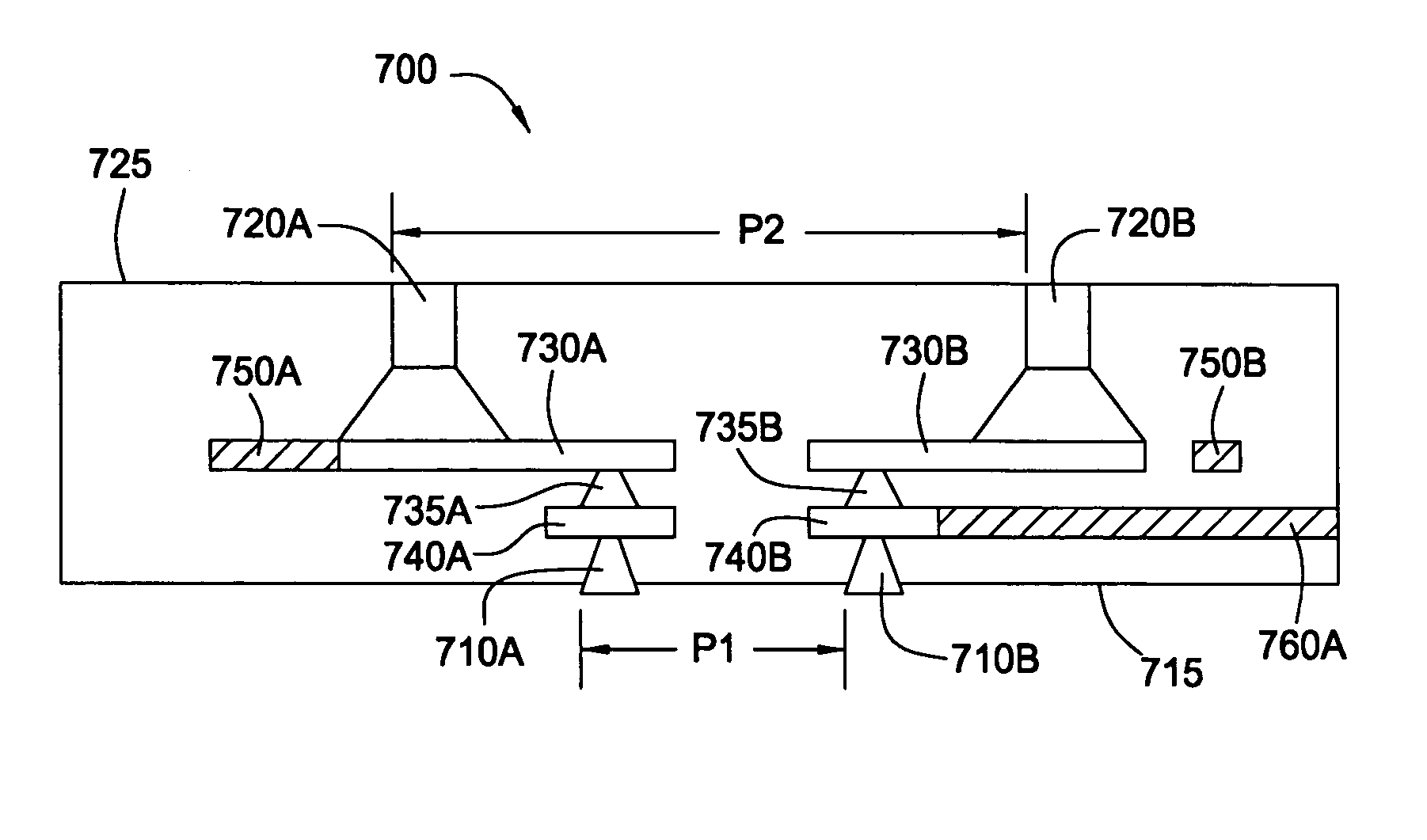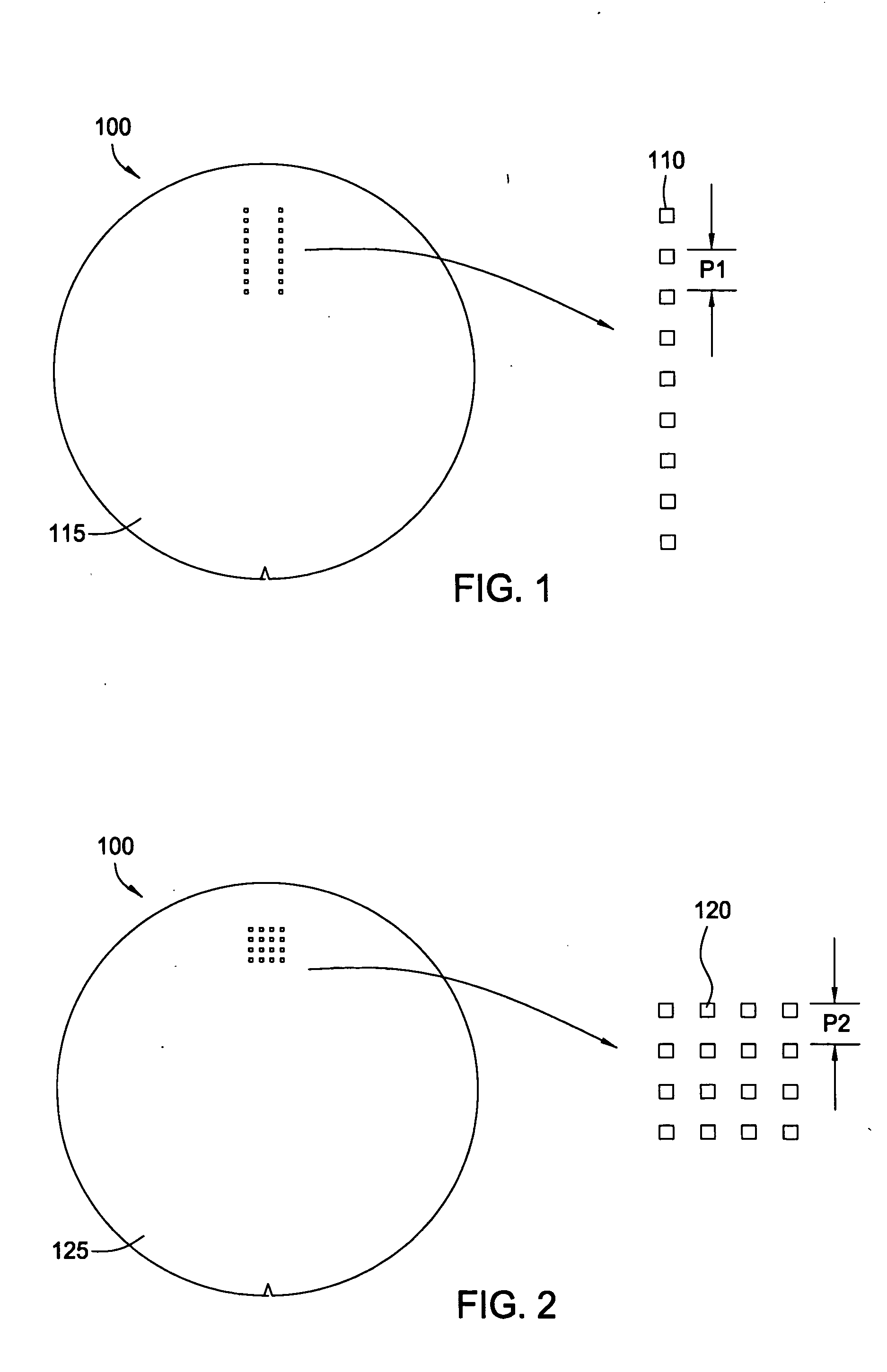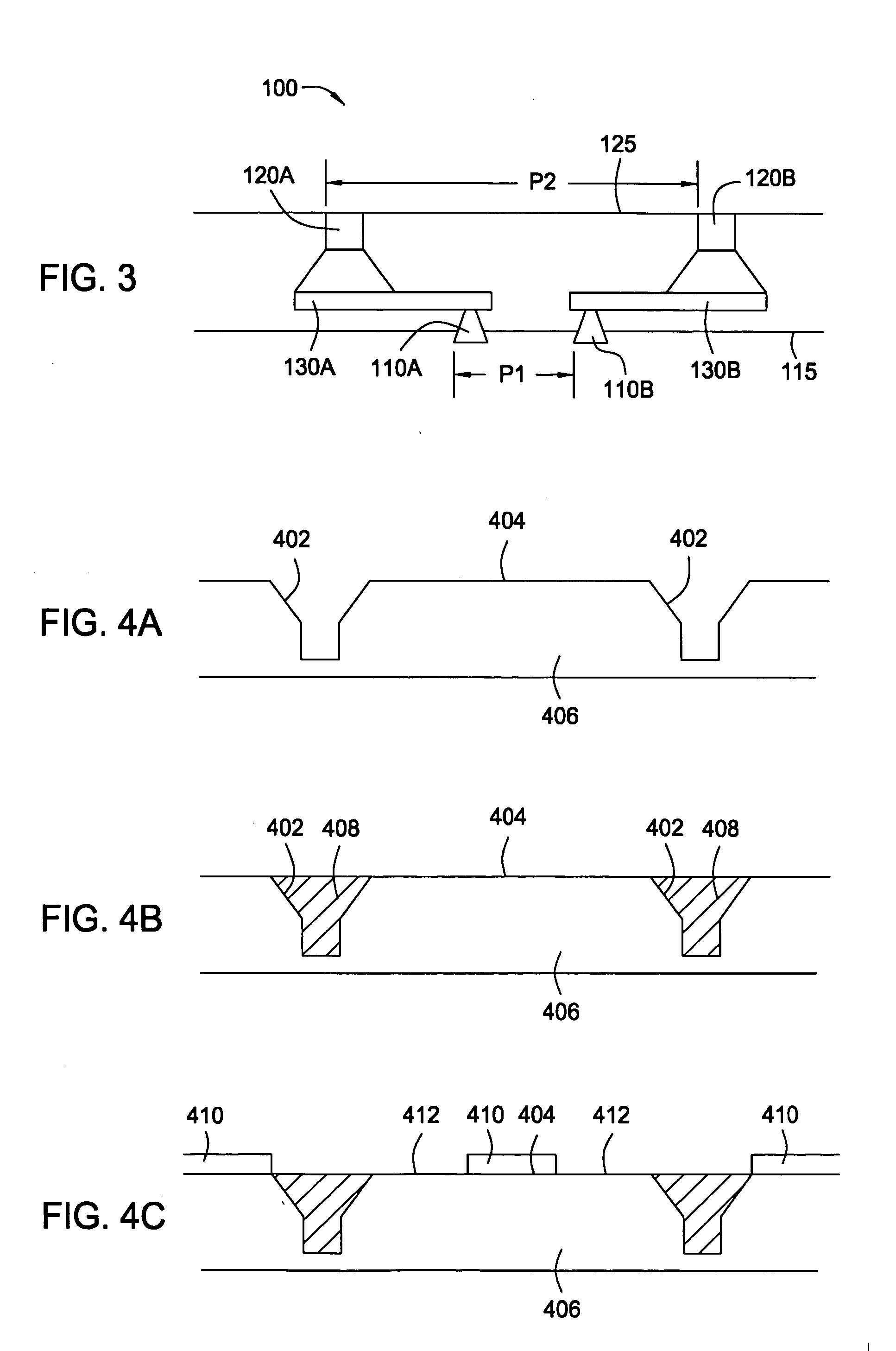Test circuitry wafer
a test circuit and wafer technology, applied in the field of test circuitry wafers, can solve the problems of increasing the direct cost of manufacturing the probe card/needle, the long lead time needed to manufacture the probe needle, and the high cost of precision probe needle manufacturing, so as to reduce the precision requirement of the probe card, reduce or minimize the number of touchdowns on the device pad, and improve the efficiencies of both testing time and the manufacturing cost of the probe card
- Summary
- Abstract
- Description
- Claims
- Application Information
AI Technical Summary
Benefits of technology
Problems solved by technology
Method used
Image
Examples
Embodiment Construction
[0030] Embodiments of the present invention generally provide apparatuses and methods for testing a device wafer having a plurality of devices formed thereon. One embodiment provides an interface wafer which serves as an interface between a device wafer having a plurality of devices formed thereon to be tested and a probe card of a testing system. Another embodiment provides a parallel test interface wafer which facilitates parallel testing of devices formed on a device wafer. Yet another embodiment provides a test circuitry wafer which incorporates design-for-test features that are typically implemented on-chip and simplifies device designs by removing the design-for-test features from the device / chip.
[0031] In the following, reference is made to embodiments of the invention. However, it should be understood that the invention is not limited to specific described embodiments. Instead, any combination of the following features and elements, whether related to different embodiments ...
PUM
 Login to View More
Login to View More Abstract
Description
Claims
Application Information
 Login to View More
Login to View More - R&D
- Intellectual Property
- Life Sciences
- Materials
- Tech Scout
- Unparalleled Data Quality
- Higher Quality Content
- 60% Fewer Hallucinations
Browse by: Latest US Patents, China's latest patents, Technical Efficacy Thesaurus, Application Domain, Technology Topic, Popular Technical Reports.
© 2025 PatSnap. All rights reserved.Legal|Privacy policy|Modern Slavery Act Transparency Statement|Sitemap|About US| Contact US: help@patsnap.com



